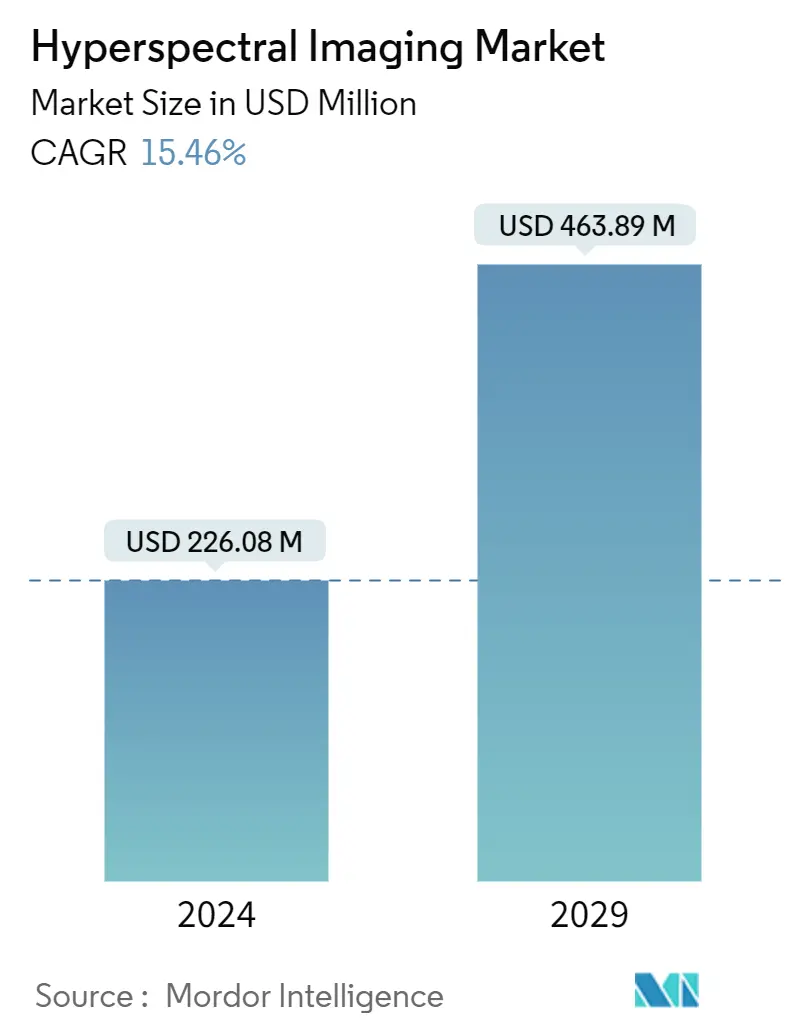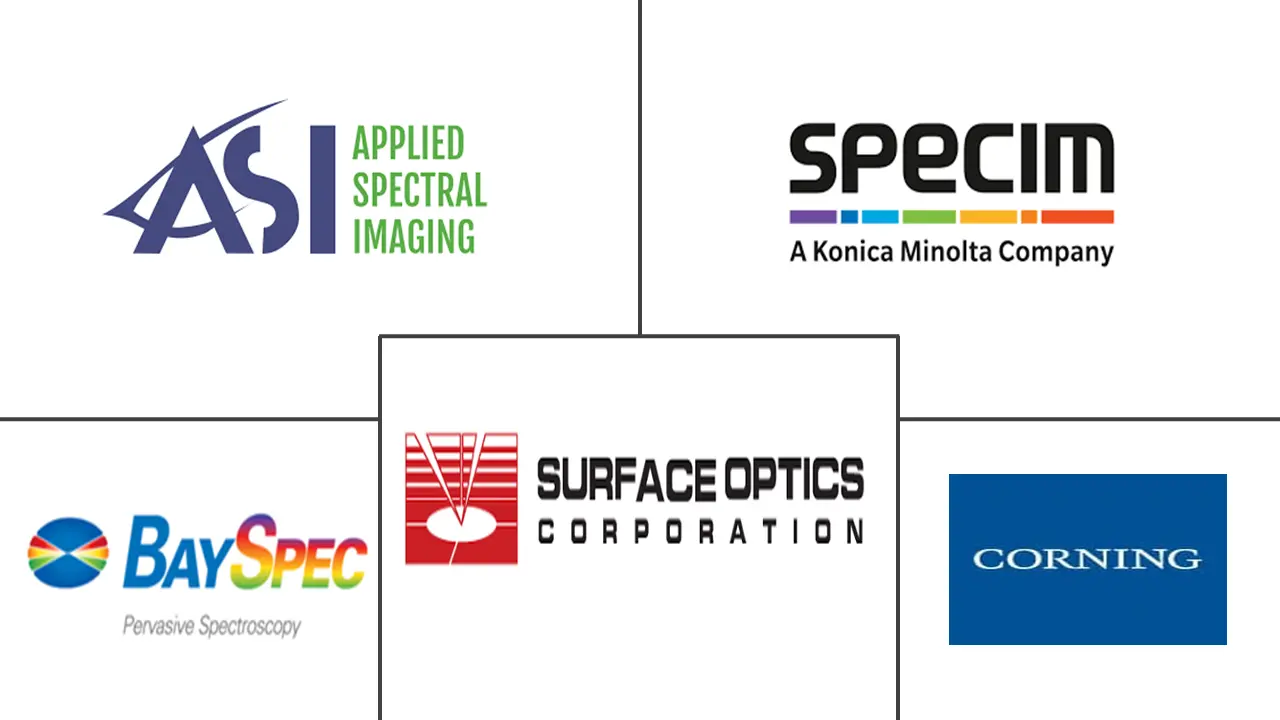Market Size of Hyperspectral Imaging Industry

| Study Period | 2019-2029 |
| Market Size (2024) | USD 226.08 Million |
| Market Size (2029) | USD 463.89 Million |
| CAGR (2024 - 2029) | 15.46 % |
| Fastest Growing Market | Asia Pacific |
| Largest Market | North America |
Major Players
*Disclaimer: Major Players sorted in no particular order |
Need a report that reflects how COVID-19 has impacted this market and its growth?
Hyperspectral Imaging Market Analysis
The Hyperspectral Imaging Market size is estimated at USD 226.08 million in 2024, and is expected to reach USD 463.89 million by 2029, growing at a CAGR of 15.46% during the forecast period (2024-2029).
Hyperspectral imaging captures and processes an image at many wavelengths. A human eye sees the light in three visible spectrum bands (i.e., red, green, and blue). In contrast, hyperspectral imaging divides the spectrum into various bands, covering the visible and near-infrared ranges. In hyperspectral imaging, every image pixel carries spectral information, which is added as a third dimension of values to the two-dimensional spatial image, thereby generating a three-dimensional data cube referred to as hypercube data.
- One of the key benefits of hyperspectral imaging (HSI) is high spatial and spectral resolution, which enables the detailed characterization of materials. Compared to multispectral imaging, hyperspectral imaging provides more information, allowing for more accurate analysis, identification, and separation of materials and substances. It can differentiate between materials with similar physical or visual characteristics or those that are not visible to the human eye, such as different materials.
- Territorial fights globally have raised security concerns. Globally, this scenario forces government agencies to explore modern technologies that offer enhanced safety to the citizens. Thus, persistent surveillance and collection of airborne intelligence and surveillance information are crucial in warfare against terrorism. High-resolution imagery in visible and infrared bands offers essential detection capabilities based on target shapes, temperatures, and materials.
- The increasing need for data accuracy and consistency in HSI applications, such as food and agriculture, defense, and weather, is driving the demand for hyperspectral imaging in the market. HSI uses robust analytical procedures that are critical for imaging technology in applications such as food and agriculture.
- Hyperspectral imaging generates a full spectrum for each pixel in an image. Each pixel of a hyperspectral image carries information covering the visible spectrum, offering data that can be used. For instance, it can be used to measure ocean color to map harmful algae blooms. Hyperspectral imaging systems, including cameras and accessories, can be expensive due to the advanced technologies and specialized components involved. The availability of hyperspectral imaging systems is relatively limited, which can contribute to their higher costs. Also, the R&D, refinement, operation, and analysis of hyperspectral imaging data often require specialized expertise, which can add to the overall cost of using this technology.
- The COVID-19 attack had a remarkable impact on the market studied, with several end-user industries that deploy hyperspectral imaging facing several difficulties. The industries were stuck with nationwide lockdowns, which brought them to a standstill, but after Q2 of 2020, they gradually started their operation. Moreover, since the raw materials are bought in China, the sourcing has been affected by the tariffs imposed by the United States.
